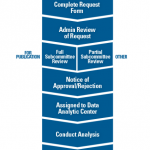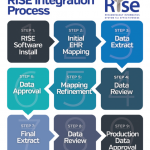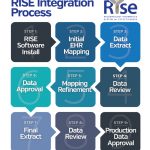The Rise of RISE
The ACR launches its own rheumatology registry
From the College
In 2014, Salahuddin Kazi, MD, then the chair of the ACR Registries and Health Information Technology Committee and program director of internal medicine at UT Southwestern Medical Center in Dallas, announced in the pages of The Rheumatologist the creation of the Rheumatology Informatics System for Effectiveness (RISE) registry, an enhanced version of the Rheumatology Clinical Registry (RCR).
Although RISE and CorEvitas are both registries, their objectives, goals and day-to-day functions differ greatly. First, CorEvitas’ foundational aims were safety focused, aiming to identify and analyze the safety and efficacy of therapeutics. In contrast, RISE was designed to provide quality improvement capabilities and federal quality reporting support for such programs as the Merit-Based Incentive Payment System (MIPS).
In addition to different goals, CorEvitas and RISE also have practical differences. RISE is electronic health record (EHR) enabled, meaning data collected during patient encounters are automatically extracted. CorEvitas relies on a case report form. Although that does necessitate additional forms for providers to complete and submit to the registry, participants receive a financial incentive to balance the burden of time spent.
The differences between EHR-enabled and case form-enabled registries go further. Because data from the EHR are automatically extracted for RISE, information on all diseases seen by rheumatology providers is collected. This is useful for providers who wish to track their performance on quality measures, expanding the usable measures.
Because CorEvitas relies on case forms, the data collected are more specific and limited. To accommodate the need to study various diseases, CorEvitas expanded by building additional disease-specific registries. In this way, CorEvitas serves more as an umbrella organization for these smaller registries.
By offering differing registry experiences and goals, both CorEvitas and RISE contribute important value to the medical community.
I never considered myself an entrepreneur, although I had been called that. In retrospect, it was fortunate for me that the administration at AMC had harshly disapproved the initiative, and that I chose to leave.
By 2011, nine-and-a-half years after the first patient was entered into the registry and almost 11 years after the idea was born, my wife and I were able to start to pay back our personal investment from years before. For the first time, I even started to take a modest salary from CORRONA. Prior to this juncture, every penny CORRONA generated went directly into facilitating the expansion of support personnel, infrastructure and site payments. A pure entrepreneur would have never made it through these long years without realizing income.


